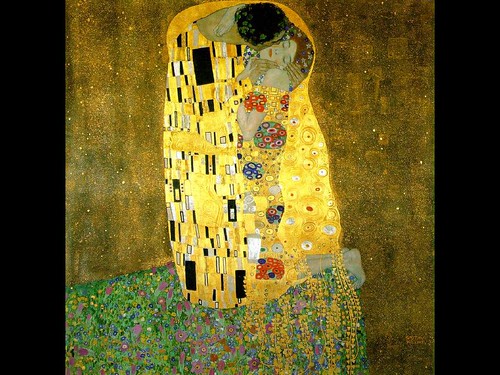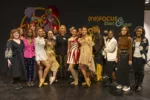It’s been such a long while since artists unabashedly embraced the beautiful and the pretty that to see it placed before you as an earnest expression of soul makes me think the artist is a rebel, someone marching to her own drumbeat. Clara Fialho‘s highly internalized paintings at Bridgette Mayer Gallery are both beautiful and very pretty. And the dreamy abstract paintings deserve a close look because they embrace a kind of pre-postmodern sense of, I don’t want to say optimism, but at least acceptance of the world as a bunch of lemons with which you can make something delicious.
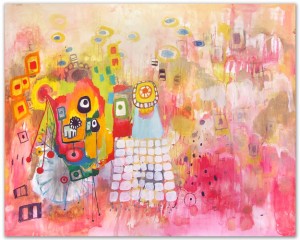
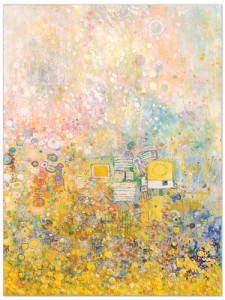
Most contemporary art that’s pretty is “pretty” — it uses tropes of prettiness (pastel colors, lucious paint or surfaces) as a foil for some edgy subject matter that is not pretty. (Lisa Yuskavage, with her cotton candy colors and grotesquely-shapen women, is a practitioner of this kind of “pretty.”) But Fialho’s sense of prettiness and beauty comes from the desire to express the Jungian soup we all swim in where in our dreams we are one with the earth, the planets, humankind, the animals, insects and the stars. (Well maybe not the insects but you know–everything else.)
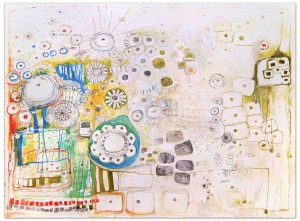
Fialho, (b. 1984) now in her Philly debut at Mayer, is a young Brazilian-born New York artist who really knows how to pour on the colors, the textures, the drips and the ur-shapes that might or might not signify. Her large, dreamy oil paintings have a watery or melting quality as if they washed in on a wave and may just disappear again dissolving into the elements. They are aboriginal, almost shamanistic, like they were made to convene the stars for a blessing or ceremony.
The artist’s vocabulary of shapes comes right out of universal doodles: Circles in squares or circles in circles; circles encircled with starbursts of lines like round millipedes; or circles with long legs like jellyfish. These little characters are placed in overall compositions that speak of eternal flux that is peaceful but may also include upheavals.
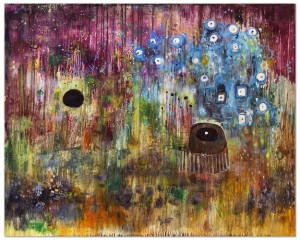
The Space Above My Kitchen with its dark purple background at the top and large, dark hairy creature in the foreground suggests that the artist conceives of inauspicious events in her non-linear Candyland environments.
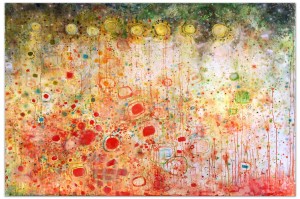
It’s impossible not to see the ghost of Gustav Klimt in these works. There’s no gold leaf or figures in Fialho but the impulse to make something beautiful, floaty and filled with swirling dots and sumptuous colors is much the same. And her impulse to excess is positively baroque. (See the thick buildup of paint daubs on some of the works…and the profusion of drips in others.) Joan Miro comes to mind as well. For contemporary practitioners, how about Ali Banisadr, whose very pretty works are teeming with life that you can’t quite make out. See post.
Fialho is very young, and yet the works feel old, like they belong to a different, less frenzied and electronics-driven age. I would imagine the artist has a Facebook page like everyone else but she doesn’t paint like she does. The work stands outside contemporary styles and fads and almost feels outsider-y. (She is not self-taught but graduated from Cooper Union (BFA, 2006), and has been exhibiting quite a bit, including a solo show last year at Merge Gallery in Chelsea.

La Leçon de Sky by Joan Miró.
Contemporary Art Museum Sofía Ímber, Venezuela
This is not explosive work. It’s slow and thoughtful, and its rhythms and loveliness are an oasis in the hubbub that is the contemporary art world.


